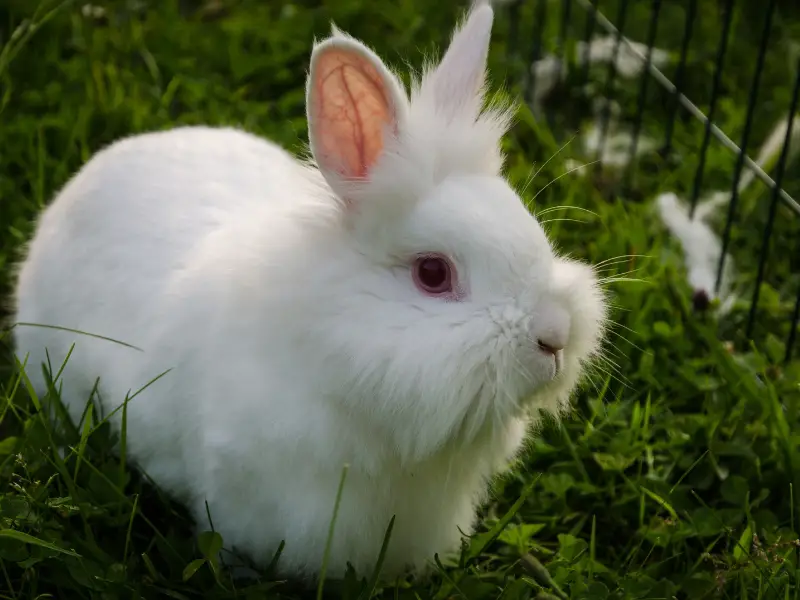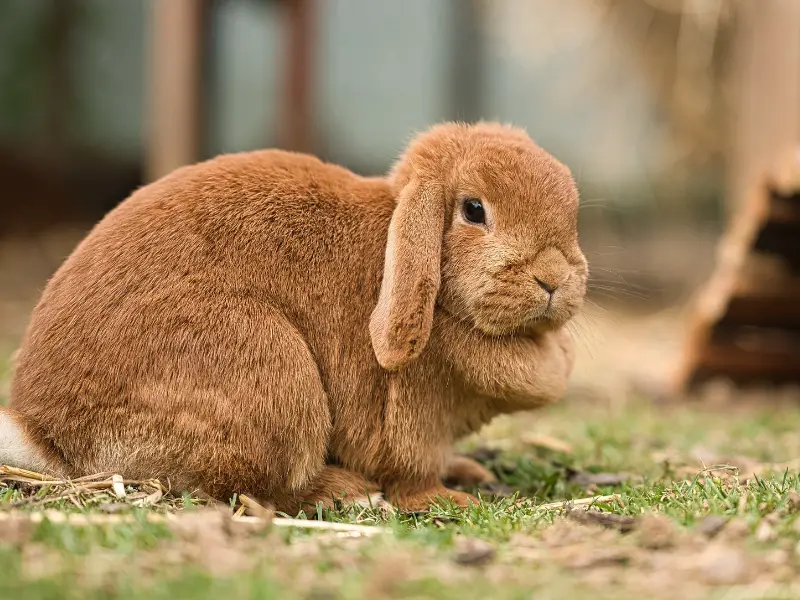Adopting a baby bunny is the cutest thing ever. But as the weeks pass, you realize they grow up fast. At the rate your bun grows, you may wonder if it’ll ever stop growing.
So when are rabbits fully grown?
Rabbits reach their full-grown size at different ages, depending on their breed, genetics, and general care. Domestic rabbits (such as the Rex rabbit) are typically fully grown by one-year-old, whereas wild rabbits (such as the Cottontail rabbit) are considered fully grown by 6 weeks old.
If you love cuddling your baby bunny but are worried about how big they’ll get, this guide will provide you with all the information you need.
How Long Does It Take a Rabbit to Fully Mature (or Grow)?
Depending on their breed, rabbits mature at different ages.
Keep in mind rabbits are prey animals (a food source for other animals such as coyotes) and need to reach sexual maturity quickly to ensure their species’ survival.
Let’s take a look at the difference between domestic and wild rabbits:
Domestic Rabbits
Typically, a domestic kit (baby rabbit) leaves (or is taken away) from the doe (mother) at 8 weeks old. The kits require a balanced diet high in fat and protein to help them grow into strong, healthy rabbits. Once they’ve left their mother, they gain weight and mature quickly.
In general, rabbits reach sexual maturity between 3 and 8 months and are considered fully grown by a year old.
Let’s take a closer look at what age certain breeds of rabbit are considered fully grown:
- Small breed rabbits such as the Netherland Dwarf are typically fully grown by the age of 5 months old. By this time, these tiny bunnies weigh around 1 to 3 pounds.
- Medium breed rabbits such as the Rex rabbit are typically fully grown by 9 months old. By this time, these soft bunnies weigh around 7 to 10 pounds.
- Large breed rabbits such as the French Lop are typically fully grown by 10 months old. By this time, they weigh around 15 pounds.
- Giant breed rabbits such as the Flemish Giant are typically fully grown by 18 months old. By this time, they weigh around a whopping 22 pounds (or more).
Wild Rabbits
Unlike domestic rabbits, a wild rabbit (such as the Cottontail rabbit) is considered fully grown by 6 weeks old. Unlike domestic rabbits, this ensures their survival, as wild rabbits must evade predators.
Wild kits (baby rabbits) start looking for food at 2 weeks old. By the time they’re 6 weeks old, they will weigh around 3 pounds. Cottontails reach sexual maturity when they are 8 weeks old and can already begin to reproduce.
Tips on How to Help a Rabbit Grow Fully

Some factors will affect the growth of a rabbit, such as their diet, general care, breed, and genetics.
Here are some tips on how you can help your floppy-eared friend reach their full-grown adult size:
A Balanced Diet
Providing your bun with a balanced and healthy diet is paramount. Rabbits are grazers, which means they nibble on food all day.
You need to ensure your bun is nibbling on the good stuff, such as:
- 80% Timothy grass hay to keep your bun digestive system running smoothly.
- 10% fresh leafy greens such as romaine lettuce, carrot tops, mint, and basil. This adds variety and extra nutrients to their diet.
- 5% good quality pellets are a great snack for your bun as they are a concentrated source of fiber, vitamins, and minerals.
- 0 to 5% treats, which should be given sparingly as rabbits have a serious sweet tooth that can lead to obesity.
Spay or Neuter Your Rabbit
Spaying or neutering your bun is a must if you’d like to see your bun fully grown.
This will increase their life expectancy, decrease the chance of reproductive cancers (ovarian and testicular), and improve their general health and well-being.
A Good Living Environment
Another way to help your bun reach its full size is by ensuring they have a clean and suitable living environment.
Your bun should be able to comfortably move around its enclosure and sit upright on its hind legs (without bumping its head on the roof).
If your buns hutch is outdoors, ensure it’s not in direct sunlight or high temperatures (avoid going over 75℉), as this can cause your bunny rabbit to overheat quickly, which leads to distress and heatstroke).
If your bunny is a free-roam bun, you must ensure no dangerous objects or live wires are lying around the house that they can chew on.
Can You Tell How Big a Bunny Will Get?
While it’s difficult to gauge just how big a bunny will get due to crossbreeding, there are some physical traits you can look out for that may give you some indication of how big your bun will get, such as:
- Looking at the parents’ size and breed
- The body shape and weight
- The ear style (this will help you identify the breed)
- The type of fur
Once you’ve collected this information, you can look the breed up online, and this will give you a general idea of how big your floppy-eared friend will get.
At What Age Do Bunnies Stop Growing?
In general, a domestic rabbit stops growing by the age of 1 year old.
On the other hand, wild rabbits grow and mature a lot faster than domestic rabbits and are generally considered fully grown by one and a half months old.
Do Rabbits Get More Cuddly with Age?
Young rabbits have a lot of energy, but as they reach their adult years (between 3 to 7 years), they start to calm down. This is a lovely time to get to know your bun as they settle into their routine and personality.
You and your bun will have built a beautiful bond over the years, and your bun will become more affectionate and cuddly with age. This also has a lot to do with trust.
My Last Bunny Thoughts
As you can see from this guide, each rabbit is unique and reaches maturity at different ages. It’s essential that you help your bun reach its full-grown adult size in the healthiest way possible.
One of the best ways to ensure your bun has a long life is to get them spayed or neutered.
Bunnies grow up very quickly, so enjoy them while they are young because they won’t be able to fit in your one hand for very long.

